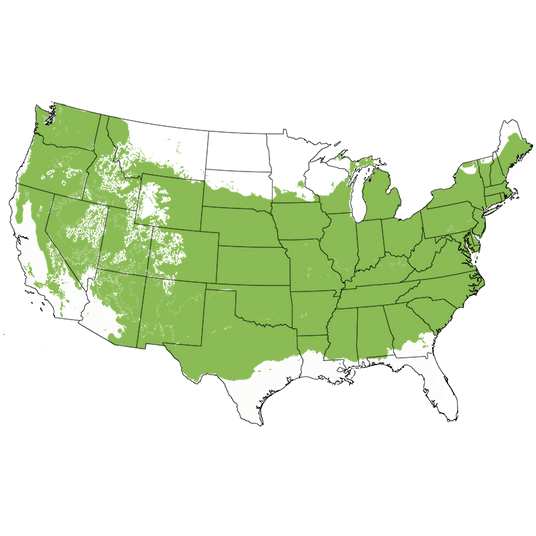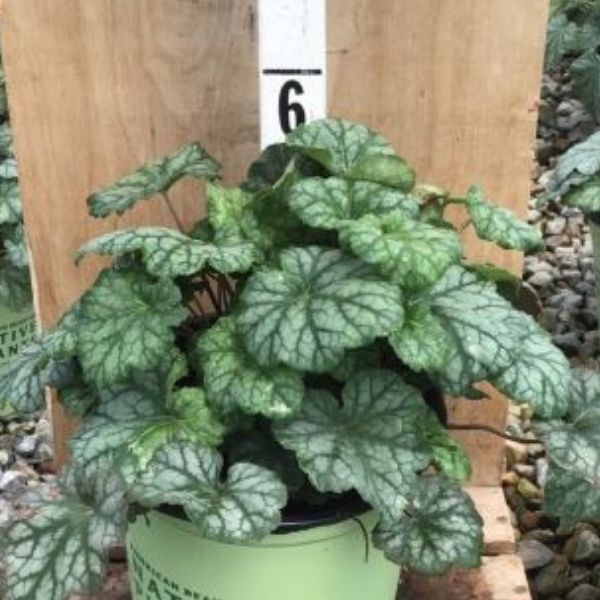Longflower Alumroot
Heuchera longiflora
Plant Sentry™
Plant Sentry™

Plant Sentry™ Protected
Your order is protected by our compliance system that:
- Prevents restricted plants from shipping to your state
- Ensures plants meet your state's agricultural requirements
- Protects gardens from invasive pests and diseases
Delivery and Shipping
Delivery and Shipping
Delivery and Shipping
Fast, Safe Plant Delivery
Ships in 3-4 business days • Tracking provided • Weather protected
| Under $50 | $9.99 |
| $50 - $99.99 | $14.99 |
| $100 - $149.99 | $16.99 |
| $150 - $198.99 | $24.99 |
| $199+ | FREE |
✓ Zone-specific timing • ✓ Professional packaging • ✓ Health guarantee
Understanding Plant Options
Nature Hills offers plants in two main formats:
- Container Plants: Grown in pots with soil, sized by container volume and plant age
- Bare Root Plants: Dormant plants without soil, sized by height measurements
Container Plant Sizes
Container sizes indicate plant age and growing capacity rather than liquid volume equivalents. Our containers follow industry-standard nursery "trade gallon" specifications, which differ from standard liquid gallon measurements.
Young Plants (6 months to 18 months old)
| Container Size | Actual Volume | Metric Equivalent |
|---|---|---|
| 2" x 2" x 3" | 0.18 - 0.21 dry quarts | 0.20 - 0.23 dry liters |
| 4" Container | 0.31 - 0.87 dry quarts | 0.35 - 0.96 dry liters |
| 4.5" Container | 0.65 dry quarts | 0.72 dry liters |
| 6" Container | 1.4 dry quarts | 1.59 dry liters |
| 1 Quart | 1 dry quart | 1.1 dry liters |
| 5.5" Container | 1.89 dry quarts | 2.08 dry liters |
Established Plants (18 months to 2.5 years old)
| Container Size | Actual Volume | Metric Equivalent |
|---|---|---|
| 2 Quart | 2 dry quarts | 2.2 dry liters |
| #1 Container | 2.26 - 3.73 dry quarts | 2.49 - 4.11 dry liters |
| 5" x 5" x 12" | 3.5 - 4.3 dry quarts | 3.85 - 4.74 dry liters |
Mature Plants (2-4 years old)
| Container Size | Actual Volume | Metric Equivalent |
|---|---|---|
| #2 Container | 1.19 - 1.76 dry gallons | 5.24 - 7.75 dry liters |
| #3 Container | 2.15 - 2.76 dry gallons | 8.14 - 12.16 dry liters |
Large Plants (3-5 years old)
| Container Size | Actual Volume | Metric Equivalent |
|---|---|---|
| #5 Container | 2.92 - 4.62 dry gallons | 12.86 - 20.35 dry liters |
| #6 Container | 5.25 - 6.01 dry gallons | 23.12 - 26.42 dry liters |
| #7 Container | 5.98 - 6.53 dry gallons | 26.34 - 28.76 dry liters |
Bare Root Plants
Bare root plants are sold by height from the root system to the top of the plant. Plants may exceed minimum height requirements.
Common Sizes:
- Trees: 1 foot, 2 feet, 3 feet, 4 feet, 5 feet, 6 feet
- Shrubs & Perennials: 1 foot, 18 inches, 2 feet
Important Notes
Container Volume Specifications
- Trade Gallon Standard: Our containers follow industry-standard "trade gallon" specifications established by the American National Standards Institute (ANSI Z60.1) for nursery stock
- Volume Variations: Actual soil volume may vary due to plant root systems and growing medium settlement
- Age Indicators: Container size primarily indicates plant age and maturity rather than liquid volume equivalents
Growing Conditions
- Plant size can vary based on variety and growing conditions
- Container size helps indicate plant maturity and establishment level
- Larger containers generally mean more established root systems and faster landscape establishment
Seasonal Availability
- Bare root plants are available seasonally when dormant
- Container plants are available throughout the growing season
- Specific varieties may have limited availability in certain sizes
Questions?
For questions about specific plant sizes or availability, please contact our plant experts who can help you choose the right size for your landscape needs.

Plant Sentry™ Protected
Your order is protected by our compliance system that:
- Prevents restricted plants from shipping to your state
- Ensures plants meet your state's agricultural requirements
- Protects gardens from invasive pests and diseases
Plant Profile & Growing Essentials
Cold hardy, Deer-resistant, Flowering, Drought resistant, and Container Friendly
Specifications
Specifications
-
Botanical Name
-
Height
-
Width
-
Growing Zones
-
Growth RateModerate
-
Flower Color
-
Leaf Color
-
NativeYes
-
Pollinator FriendlyYes
-
FragrantYes
-
Bloom PeriodEarly Summer, Late Summer
-
Does Not Ship ToAK, HI, ID, MT
Planting & Care Instructions
Planting & Care Instructions
Longflower Alumroot (Heuchera longiflora) is a species of Heuchera with silvery-green foliage and incredibly showy flowers that are great for bouquets and your butterflies! A variety of Coral Bells, it's well-known for its fantastic foliage!
This variety has large toothed leaves with silvery-green patches on the leaves for a dramatic two-tone effect! The toothy ripped leaf margins add texture to the neat mounds of leaves! From each several tall, dainty pale-yellow and pinkish blossoms emerge for the summer! Butterflies and bees adore these diminutive blooms, and so will the occasional hummingbird!
Longflower Alum Root is fantastic edging and for mass planting where you need a low-maintenance perennial that adapts to about any condition! In fact, that is what this native plant does best! You'll find this variety growing wild in parts of the southeastern US, and it brings its disease and pest-free attitude to your home landscape!
Planting and Application:
The flowers are long-stemmed, dainty wonders and add a graceful air to shady perennial and cottage borders as well as cutting gardens where they'll delight your pollinators! Let wind through your mixed-shrub borders as groundcover, or atop a steep slope where it may be dangerous to mow and provide erosion control!
Alum Root are fantastic for en masse plantings, there's nothing that catches the eye better, or covers more thoroughly than these spreading, neat mounds of brilliant foliage. Create long rows for continuous color in front of windbreaks and hedges, use them as facer plants to hide larger shrubs' bare legs, or dress up your front foundation plantings with bold greenery! The tidy mounds are the perfect edging, easing the transition between lawn and garden!
- Shade-Loving Perennial
- Silver-Green Mottled Leaves
- Gorgeous Texture
- Dainty Pink & Yellow Blooms
- Pollinators & Floral Design
#ProPlantTips for Care:
Alumroot is a hardy native that thrives in shady, moist sites that are always well-drained, never soggy. Clean mounds in early spring to remove any dead leaves before you see new growth. It is recommended you divide your clumps every 3-5 years to maintain vigor. Mulch the site very well for insulation and to maintain moisture levels.
- Partial Shade/Sun & Full Shade
- Adaptable Native
- Well-Drained Moist Soil
- Clean Mounds in Early Spring
The darling Longflower Alumroot is a fantastic garden addition with native pest and disease resistance you can count on! Order this and many other fantastic shade perennials at NatureHills.com today!
Frequently Asked Questions
How do I prune Coral Bells?
Coral Bells do best when pruned in the early spring. Leaving the foliage intact as an extra blanket for winter protection over the crown. In some climates, Coral Bells can be semi-evergreen, so leaving those colorful leaves up all winter adds winter interest!
Do Coral Bells prefer sun or shade?
Coral Bells need partial sun/shade or full shade in warmer climates. They do best in the morning sun to dry the leaves of dew and afternoon shade to provide relief from the hot summer sun.
Do Coral Bells spread?
Coral Bells can spread into tidy mounds about 2-3 feet in width but do not spread by rhizomes or stolons further than where they're planted.
Where do Coral Bells grow best?
Coral Bells love a shaded site in enriched soil that is well-drained. They appreciate regular moisture and a mulched root zone.
Do Coral Bells attract hummingbirds?
Coral Bells are loved by pollinators and hummingbirds! All walks of beneficial pollinators will show up to sip their nectar.
What pairs with Coral Bells?
These shade-loving perennials pair with lacy Astilbe and Ferns, other coarse foliage plants like Hosta, and the lobed foliage of Columbines! Try pairing with Barrenworts and Bergenia too!
What Shipping Options Do You Offer?
NatureHills.com works closely with our growers and nursery professionals to ensure we ship when it is most appropriate for your area. Our goal is to deliver the hardiest plants by avoiding extreme high and low temperatures. Check out our shipping schedule for more information and to learn our wills and don'ts when it comes to shipping plants. Find your Coral Bells for sale here at NatureHills.com!









